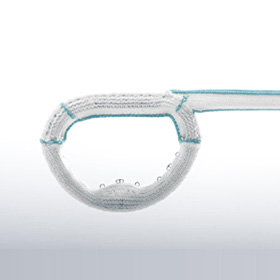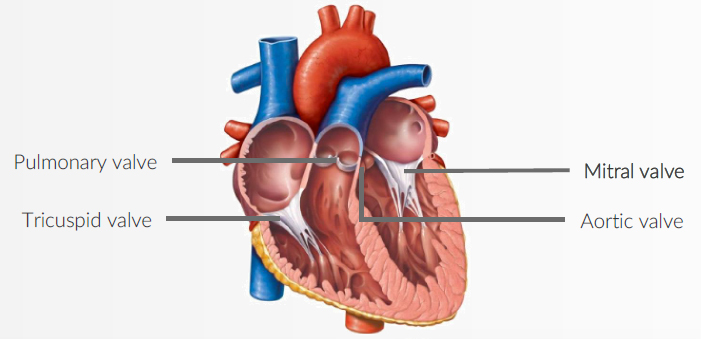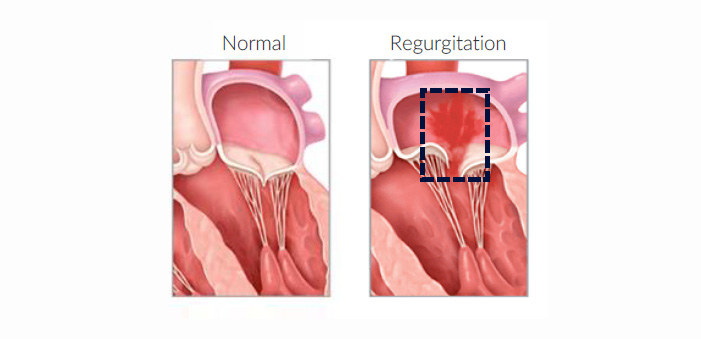Mitral valve regurgitation, a Debilitating and Potentially Deadly Pathology.
Mitral regurgitation results in blood leaking through the mitral valve each time the left ventricle contracts.
This potentially deadly disease is highly prevalent, and eventually leads to heart failure.


Like P. and M., 160 million people around the world suffer from mitral insufficiency, including 4 million who are seriously ill. Symptoms depend on how ill they are: shortness of breath after exercise or even when at rest, breathing difficulties, palpitations and cardiac rhythm disorders, chest pains, pericarditis. Without treatment, their condition can become life-threatening. The heart tires, leading to heart failure, which can cause death.
To improve their daily life and even save these patients, there are two solutions: repairing or replacing their mitral valve.
Both of these options are major and costly procedures: open-heart surgery with extracorporeal circulation, and post-operative followup that requires several months of recovery. Furthermore, with repair, new surgery is often required to adjust the prosthesis – or even replace the valve that has started leaking again.
Our solutions

Structural heart
Kalios™
Mitral valve repair


Structural heart
Epygon
Mitral valve replacement

Anatomy of the heart
and heart valves

These valves can be damaged in several ways:
- do not open sufficiently and prevent blood flow (stenosis): 46% of cases(1)
- do not close properly (regurgitation): >12% of cases
- both types of dysfunction: 42% of cases(2)
Insufficiency of the left ventricle leads to heart failure.
Mitral regurgitation occurs when the mitral valve no longer closes properly

2 options to treat mitral regurgitation:
- Repair
- Replacement
Mitral valve repair and replacement

If it is feasible, mitral valve repair is the gold standard surgical option because it preserves the native valve and ensures better long-term results. The most common repair technique is the annuloplasty procedure involving the implantation of a device surrounding the mitral valve to reduce annular dilatation and draw the leaflets together to restore coaptation.
However, regurgitation can recur in 40% of patients within two years (Goldstein). In certain complex cases, residual regurgitation may occur immediately after surgery and, except in certain high-risk patients, further valve exploration must be.